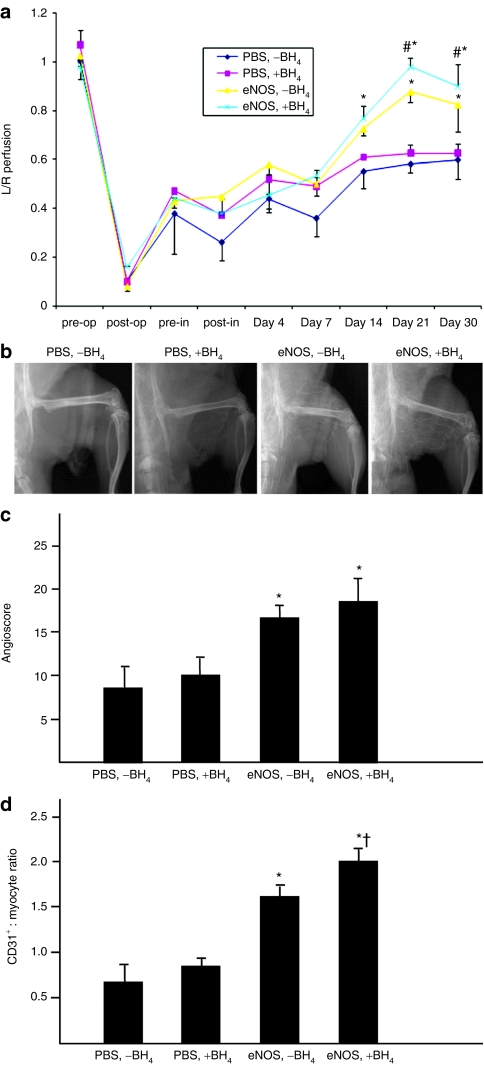Figure 4.
Co-treatment with eNOS gene transfer and dietary BH4 significantly improved blood flow and capillary density in the ischemic hindlimb. (a) LDPI data were expressed as the ratio of the ischemic:nonischemnic limb. Rats receiving AdeNOS 10 days after induction of ischemia demonstrated greater foot blood flow recovery between postischemia days 14 through 30 than rats receiving PBS infusion, and the addition of BH4 alone had no effect. Rats who received co-treatment with AdeNOS and BH4 had greater foot flow recovery between postischemia days 21 and 30 after induction of ischemia than rats receiving AdeNOS alone (m ± SD, n = 5, *P < 0.05 versus [PBS, −BH4], #P < 0.05 versus [eNOS, −BH4]). (b,c) The angioscore, determined 18 days after AdeNOS or PBS infusion (28 days after induction of ischemia), was greater in rats receiving AdeNOS than in rats receiving PBS; co-treatment with dietary BH4 and AdeNOS did not cause a further increase in the angioscore (mean ± SD, n = 5, *P < 0.05 versus [PBS, −BH4]). (d) Capillary density, expressed as the ratio of CD31+ cells (endothelial cells):myocytes, was determined in the ischemic gastrocnemius muscle 18 days after AdeNOS or PBS infusions (28 days after induction of ischemia). Rats receiving AdeNOS had higher capillary density measurements than rats receiving PBS, and this effect was increased in rats receiving co-treatment with AdeNOS and BH4 (mean ± SD, n = 5, *P < 0.05 versus [PBS, −BH4], †P < 0.05 versus [eNOS, −BH4]). BH4, tetrahydrobiopterin; eNOS, endothelial nitric oxide synthase; I/R, ischemia/reperfusion; PBS, phosphate-buffered saline.

